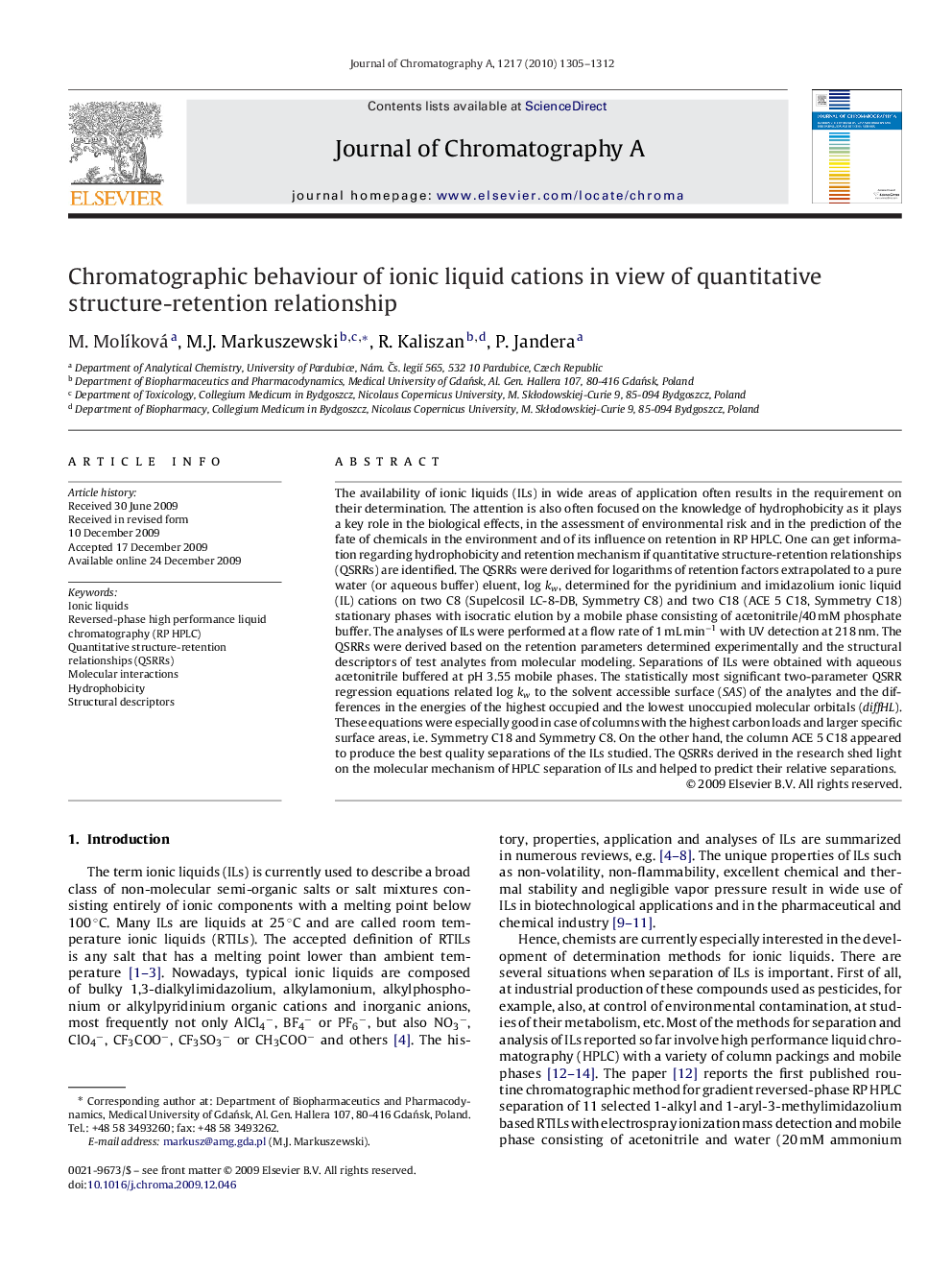| کد مقاله | کد نشریه | سال انتشار | مقاله انگلیسی | نسخه تمام متن |
|---|---|---|---|---|
| 1204237 | 965146 | 2010 | 8 صفحه PDF | دانلود رایگان |

The availability of ionic liquids (ILs) in wide areas of application often results in the requirement on their determination. The attention is also often focused on the knowledge of hydrophobicity as it plays a key role in the biological effects, in the assessment of environmental risk and in the prediction of the fate of chemicals in the environment and of its influence on retention in RP HPLC. One can get information regarding hydrophobicity and retention mechanism if quantitative structure-retention relationships (QSRRs) are identified. The QSRRs were derived for logarithms of retention factors extrapolated to a pure water (or aqueous buffer) eluent, log kwlog kw, determined for the pyridinium and imidazolium ionic liquid (IL) cations on two C8 (Supelcosil LC-8-DB, Symmetry C8) and two C18 (ACE 5 C18, Symmetry C18) stationary phases with isocratic elution by a mobile phase consisting of acetonitrile/40 mM phosphate buffer. The analyses of ILs were performed at a flow rate of 1 mL min−1 with UV detection at 218 nm. The QSRRs were derived based on the retention parameters determined experimentally and the structural descriptors of test analytes from molecular modeling. Separations of ILs were obtained with aqueous acetonitrile buffered at pH 3.55 mobile phases. The statistically most significant two-parameter QSRR regression equations related log kwlog kw to the solvent accessible surface (SAS) of the analytes and the differences in the energies of the highest occupied and the lowest unoccupied molecular orbitals (diffHL). These equations were especially good in case of columns with the highest carbon loads and larger specific surface areas, i.e. Symmetry C18 and Symmetry C8. On the other hand, the column ACE 5 C18 appeared to produce the best quality separations of the ILs studied. The QSRRs derived in the research shed light on the molecular mechanism of HPLC separation of ILs and helped to predict their relative separations.
Journal: Journal of Chromatography A - Volume 1217, Issue 8, 19 February 2010, Pages 1305–1312